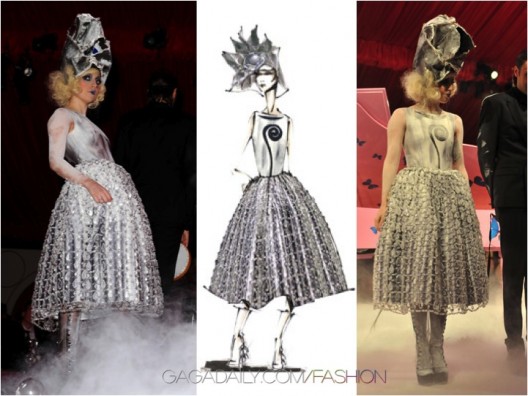Source: treehugger
 Cork \ˈkȯrk\
Cork \ˈkȯrk\n. 1 a: An impermeable, buoyant, fire-resistant material that is stripped from the bark of the cork oak every nine years. (The tree has an average life expectancy of 200 years.) b: Used in flooring, upholstery, clothing, accessories, and, of course, wine stoppers. c: A strong case for the conservation of cork oak landscapes, which support remarkable levels of forest biodiversity, including endangered species such as the Iberian Lynx, the Iberian Imperial Eagle, and the Barbary Deer.
 SeaCell \ˈsē ˈsel\
SeaCell \ˈsē ˈsel\n. 1 a: A variant of lyocell, SeaCell is made by combining cellulose with a small percentage of seaweed. b: Boasts a litany of health claims, including stress reduction, detoxification, the exchange of minerals and vitamins between fiber and skin, and a “complete sense of well-being.” c: The subject of controversy when the New York Times reported that the lab tests it had commissioned found no seaweed in a Lululemon shirt made of VitaSea, which was made of SeaCell. The yoga-apparel company disputed the Times’ findings with its own tests, but it agreed to remove any unsubstantiated therapeutic or performance claims at the request of Canada’s Competition Bureau.
 PIÑA FIBER \ pēn-yə fī-bər\
PIÑA FIBER \ pēn-yə fī-bər\n. 1 a: Long, fine, lustrous fibers obtained from the leaves of pineapple plants. (The plants are typically cultivated in Hawaii, the Philippines, Indonesia, India, and the West Indies.) b: Resilient, strong fibers often used for sheer, silky fabrics, ropes, twine, and paper. c: Piña cloth is wear-resistant and easy to clean, making it an ideal eco-textile for clothing, accessories, and home-design solutions. Eco-couture designers and the royals of the Phillipines swear by its luxe, soft qualities and use it to make the traditional Barong Tagalog embroidered ceremonial garment.
 LENPUR \ˈlen-ˈpər\
LENPUR \ˈlen-ˈpər\n. 1 a: A fiber made from the pulp of sustainably cultivated white fir wood. b: Has an exceptionally soft weave that feels similar to cashmere. c: Used in clothing, underwear, socks, and home accessories, Lenpur is said to have thermoregulatory, odor-eliminating, and absorbent properties.
 BANANA FABRIC \ bə-ˈna-nə ˈfa-brik\
BANANA FABRIC \ bə-ˈna-nə ˈfa-brik\n 1 a: A Southeast Asian cloth derived from the cast-off stems and leaves of the banana tree. b: The coarse outer layer is commonly used for woven tablecloths, cushions, seating, and curtains, while the inner, silky layer is ideal for fine saris, kimonos, and eco-couture designs like the Doo-Ri dress above. c: “Jusi,” or banana fabric/fiber is popular in Nepalese artisan workshops for the production of handcrafted, knotted rugs.
 SALMON LEATHER \ˈsa-mən ˈle-thər\
SALMON LEATHER \ˈsa-mən ˈle-thər\n. 1 a: A dyeable textile made from salmon skin—a byproduct of the fish processing industry that usually gets tossed into the landfill—using chemicals that are less toxic than those for tanning mammal hides because fish scales are easier to remove from skin than hair. (Note: no new salmon is killed expressly for its skin.) b: A resilient fabric that is stronger than most land leathers—and does not smell like fish. c: A reliable, affordable source of “sea leather” used by companies such as ES Salmon Leather, One October, Unnurwear, and Skini London in clothing, accessories, furnishing, home decor, and even bikinis.
Salmon leather was recently used in the form of die-cut paillettes by fashion designer Isaac Mizrahi to create an entire ensemble (jacket, dress, open-back shoes) for the Nature Conservancy’s “Design for a Living World” exhibition at the Cooper-Hewitt Museum in New York City.
 TENCEL \ˈten ˈsil\
TENCEL \ˈten ˈsil\n. 1 a: The trademarked brand name for lyocell, a natural cellulosic fiber with excellent moisture absorption and an exceptionally silky hand. b: A dyeable, wrinkle-resistant material that can be blended with a variety of other fibers, including cotton, rayon, polyester, silk, hemp, linen, and wool. c: Fabricated using a closed-loop process that doesn’t require bleach, although some manufacturers may use chemical processes, enzyme baths, and dyes that may or may not be environmentally sound.
When talking about eco-fashion, what first jump into our mind may be a ragged paper clothes, brown bag coat, nespaper dress. Thanks to the great advances in technology, eco-fashion no longer need to take those worn and ragged appearance; they can be just like regular fabrics with green concepts inherently incorprated in.
Traditional fabrics may use a lot of chemicals to produce, which will create enormous pollution to our environment. By using natural raw material, we can avoid the chemical synthesize process. However, if we still need to use chemicals to bleach and dye these eco-fabrics is still a question worth thinking about. Also, how to grow and use these natural materials in a moderate amount without endanger the species or overgrow the species is another question that needs close cooperation with the ecologists.



